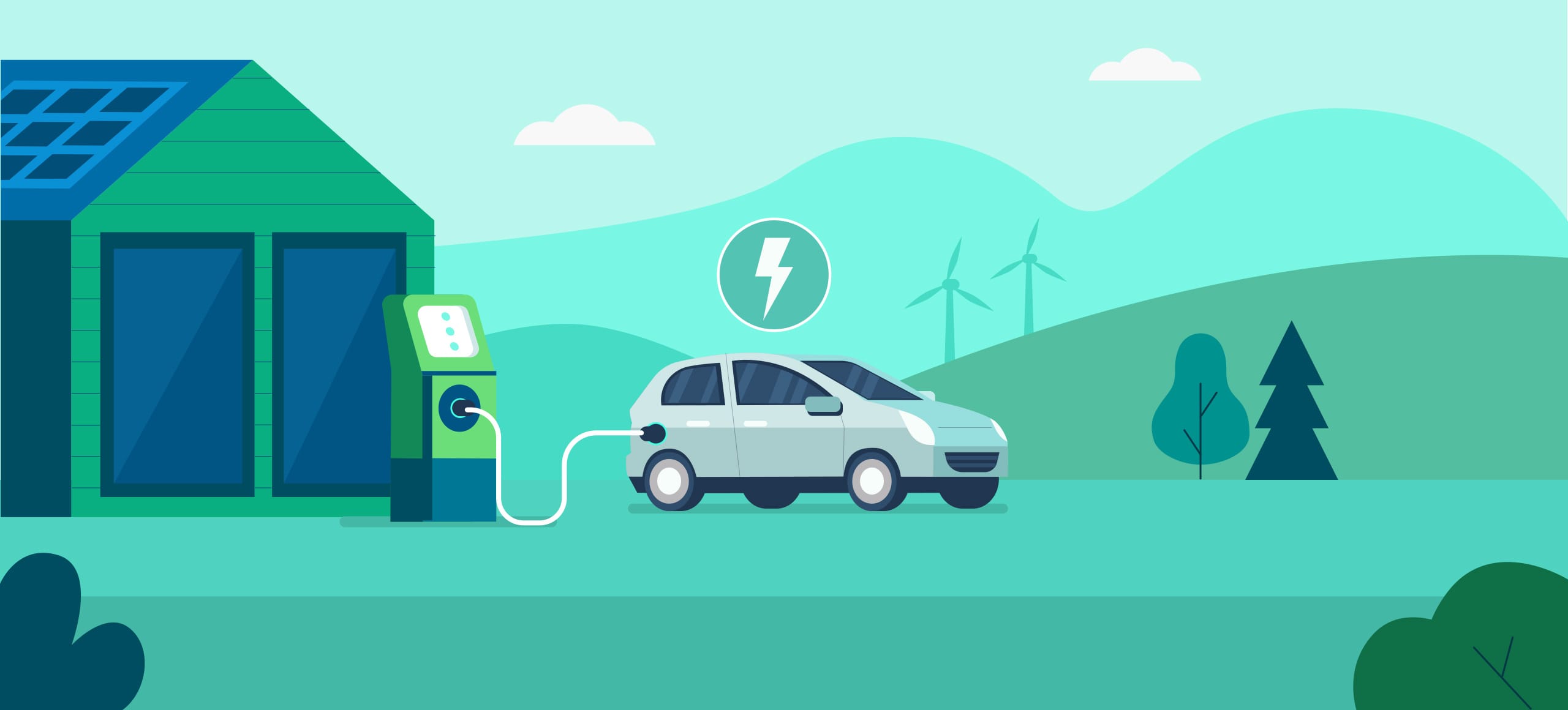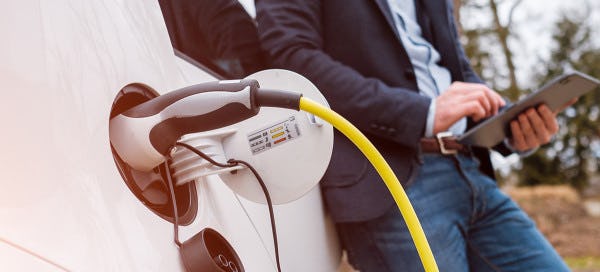Electric vehicles are a fast-growing part of our transportation infrastructure. Not only do electric vehicles save drivers on everyday costs like gas and routine maintenance, but they are a great tool for reducing emissions and combating climate change. And when combined with a EV energy plan, the carbon footprint of an electric vehicle is practically zero!
Because of this, many federal, state and local agencies are offering electric vehicle incentives to new owners. This helps reduce the initial purchase price, as well as the ongoing costs of charging. These programs can save you thousands of dollars and help get you on the road to electric vehicle ownership.
Tax Credits vs. Rebates
EV tax credits and rebate programs are the most common electric vehicle incentives. If you apply for a tax credit, the amount that you are granted will be taken off your tax bill when it comes time to pay. A rebate differs in that you will receive the amount in the form of a payment made directly to you. Rebate programs are usually offered by a private state or local program.
Reduce Your Tax Liability
Electric vehicle owners residing anywhere within the U.S. may be eligible for a federal tax credit up to $7,500. Your eligibility and credit amount varies depending upon the electric vehicle's battery size and your tax liability at the end of the year. For example, if your vehicle is eligible for the full credit amount of $7,500, but your tax bill is only $5,000, then you will only receive a $5,000 credit.
Some electric vehicles—such as new Tesla models—are not eligible for the federal tax credit (electric car tax credit phases out when a manufacturer sells 200,000 total qualifying vehicles), so be sure to confirm your eligibility amount before attempting to claim it on your taxes. Many popular EV models are still eligible for the full rebate amount, including the Nissan LEAF, Kia Niro EV, Hyundai Kona EV, BMW i3, and more.
Under the Alternative Fuel Infrastructure tax credit, any U.S. resident who owns an electric vehicle and installed charging equipment in their home at any point after January 1, 2017, is eligible for a tax credit worth 30% of the cost of installation and equipment, up to $1,000. This is another worthwhile electric vehicle incentive provided by the federal government that helps new EV owners save on investment costs.
Rebates are another way to lower the cost of your electric vehicle purchase, which are available through various state and local programs. There are several incentives that exist to help lower the initial and ongoing costs of an electric vehicle.
Clean Vehicle Rebate Project
The Clean Vehicle Rebate Project is a California-led effort to incentivize the purchases of all-electric and other zero-emission vehicles through a rebate worth up to $7,000. Depending on the make and model, new electric vehicle purchases in California may be eligible for a rebate through a simple application process (if funding remains available).
The program offers the highest rebate amount for zero-emission vehicles equipped with hydrogen fuel cells. The Hyundai Nexo, Honda Clarity, and Toyota Mirai are all eligible for a $4,500 rebate through the Clean Vehicle Rebate Project. Hydrogen fuel cells are a novel technology that is seen as a possible successor to the lithium battery, due to longer lifespans and lighter weight. This explains the high investment that Clean Vehicle Rebate Project is willing to make into these vehicles.
Traditional battery-powered electric vehicles are also up for sizable rebates under the Clean Vehicle Rebate Project. Popular models like the Nissan LEAF, Chevrolet Bolt, and Tesla Model Y can earn you up to a $2,000 rebate check.
The Drive Clean Incentive Guide is an associated program that can help California residents discover dozens of other local and state electric vehicle incentives. For instance, residents of the Bay Area and San Joaquin Valley may be eligible for up to $9,500 in incentives, depending on income, the model of the car, and other factors.
Other Electric Vehicle Incentives
For those that live in Texas or Louisiana, SWEPCO (Southwestern Electric Power Company) offers an EV Charging Station rebate program that will help lower your at-home charging equipment costs. The company will reimburse up to $250 towards the cost of installing a Level 2 EV Charging Station. This rebate is subject to limited funding—make sure to submit your application as soon as possible to improve your chances of receiving the rebate.
Residents of Austin, TX are also able to take advantage of a rebate on charging installation costs through Austin Energy. The company will reimburse 50% of the cost of installing an in-home Level 2 charger (up to $1,200), as well as offering reduced costs at charging stations.
With so many electric vehicle incentives available for at-home charging stations, installing one can become a very minimal investment. It is also the most convenient way to charge an electric vehicle on a daily basis, making at-home stations a smart option for EV owners.
Everyday Benefits of Driving Electric Vehicles
There are numerous tax incentives and rebates available to help with your new electric vehicle purchase, but many owners will see the most drastic changes as they begin utilizing their vehicle. The ongoing benefits of owning a zero-emission vehicle include reduced fuel costs, less ongoing maintenance, and a reduced carbon footprint.
Electricity vs. Gas
Electric vehicle owners save a significant amount of money by never needing to visit the gas pump. On average, Americans spend around $250 per month on gas. While an EV owner will still have to pay to charge their vehicle, it is significantly less expensive than paying for gasoline (especially when using an at-home charging station). Owners can expect to add about $30-$60 to their electricity bill when keeping their vehicle charged on a daily basis. You can compare gasoline powered cars and electric vehicles in our Electric Vehicle Hub.
Whenever changes occur in your monthly energy costs, it is a good idea to reconsider your current electricity plan in order to save money going forward. This is especially true if going green is on your radar, as natural gas and coal still make up approximately 60% of America’s electricity usage. If you’re a Texas resident, you are able to freely choose your electricity provider, including the multitude of green energy alternatives now available. Rhythm can help you find a personalized renewable energy plan that works with your needs and ensures you aren't spending more than you have to.
Reduced Maintenance
Without a traditional combustion engine to worry about, electric vehicle owners save substantial amounts of money every year on routine maintenance. There are fewer internal parts on electric vehicles, and so less chances of something wearing down and failing. According to Consumer Reports, EVs cost only half as much to maintain as a traditional gas-powered car. Part of that cost will be a battery replacement around every 100,000 miles, but lithium-battery technology is advancing rapidly, and prices should continue to decrease as a result.
A study published by the Department of Energy found that, over the lifetime of an electric vehicle, owners can expect to save about $8,000 on maintenance. This helps counteract the current costs of a new electric vehicle—you may have to pay a higher price upfront, but you can save more down the road!
Go Green
Electric vehicles don't just save drivers money, they are also helping save the environment by reducing global carbon emissions. A zero-emission vehicle does just that: emits nothing. Operating an electric vehicle does not directly contribute to pollution or greenhouse gas emissions, as long as the electricity is sustainably sourced. When combined with a green energy plan, your electric vehicle has nearly no impact on the environment.
And depending on the state, electric vehicle owners are offered driving incentives, such as HOV lane exemptions and designated EV parking spots. This can help reduce your daily commute time and make it easier to travel around the city. Also, there is a variety of ev charging apps for you to choose.
Making the Transition
Rebates, federal tax programs, and other electric vehicle incentives are helping to speed up the process towards mass adoption, which would greatly improve global environmental conditions. California residents have a large pool of incentive programs to apply for, including the Clean Vehicle Rebate Project, as the state is a leading force for ‘green’ initiatives.
Texas residents have a few state-specific rebate programs, and they also have the option of choosing a green energy provider to ensure that their new electric vehicle is powered by renewable energy. With all of this opportunity, there has never been a better time to make the transition to a zero-emission vehicle.



